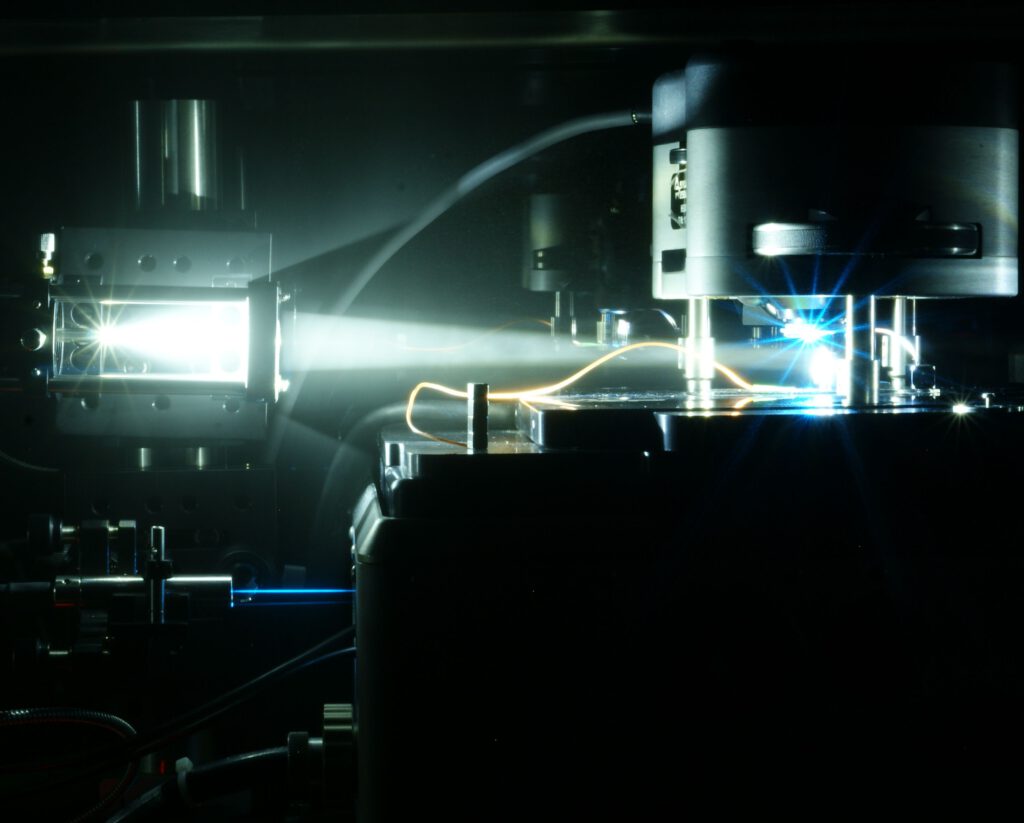
Mission
The foundation of my research is the development of new, creative methods to understand nanoscale electrical surface and interface effects such as space charge layers, surface charges and dielectric properties.
The aim is to find structure-function relashionships in nanostructures and at interfaces, e.g. in perovskite solar cells or at solid-liquid interfaces.
Perovskite photovoltaics
The field of hybrid metal halide perovskites has skyrocketed in recent years. The reason is that with this new „wonder material“, very efficient solar cells can be fabricated at very low material and manufacturing costs. The origins of the exceptional material properties can be found in the nano- and micrometer scale structure of the perovskite. So to study and finally understand the physics behind perovskite solar cells, force microscopy based methods are ideal. Our focus is on the development of new Kelvin probe force microscopy (KPFM) methods, e.g. to study the potential distribution in operating solar cell devices under illumination. Furthermore, we use Piezoresponse force microscopy (PFM) to investigate ferroic properties in perovskite thin films.
Some of the Perovskite projects are embedded within the DFG SPP 2196 Perovskite semiconductors: From fundamental properties to devices in collaborations with the universities in Hannover, Konstanz, Marburg and the Fraunhofer ISE in Freiburg.
Hydrovoltaics
Warning! High Voltage!
Water drops on an insulating, hydrophobic substrate can generate electric potentials of kilovolts upon sliding for just a few centimeters. Despite many decades of research, this peculiar effect of spontaneous electrification in moving drops is far from being understood. In my group, we develop tools to precisely determine the voltage of the tiny Nanocoulomb drop charges. In addition, we develop numerical and electrostatic models to rationalize the Physics and Chemistry happening at receding three-phase contact line and the connection to the electrostatic double layer at the drop-substrate interface.
This project is embedded in the SPP 2171 – Dynamic Wetting of Flexible, Adaptive, and Switchable Surfaces and is a collaboration with the MPI for Polymer Research, Mainz.



